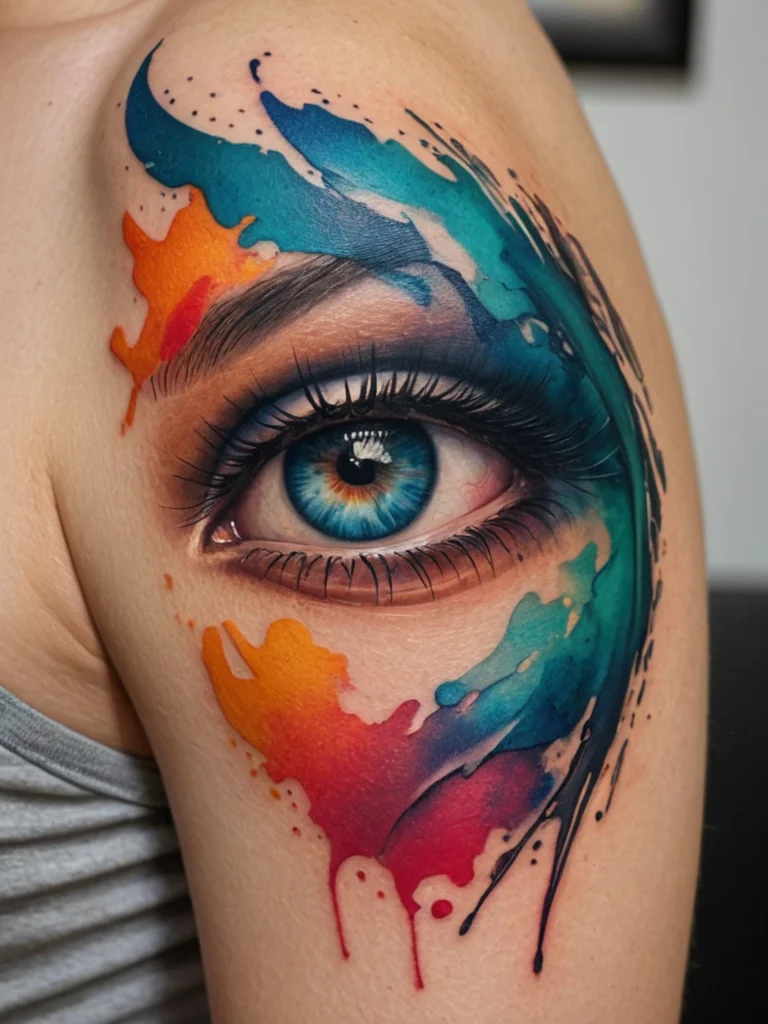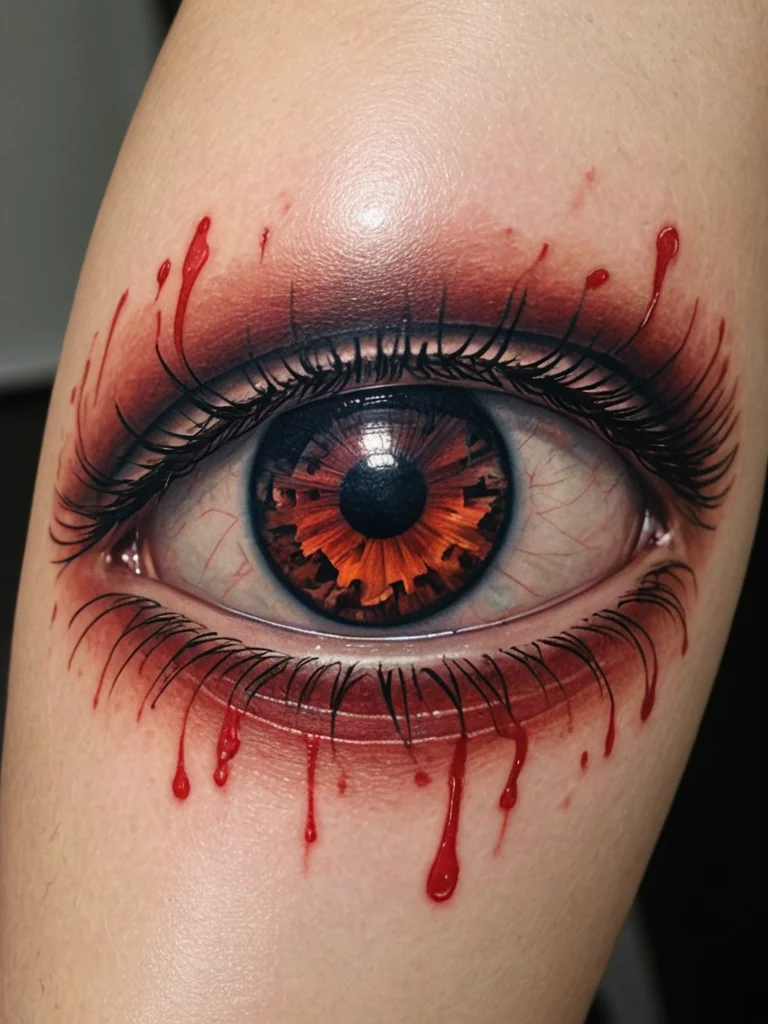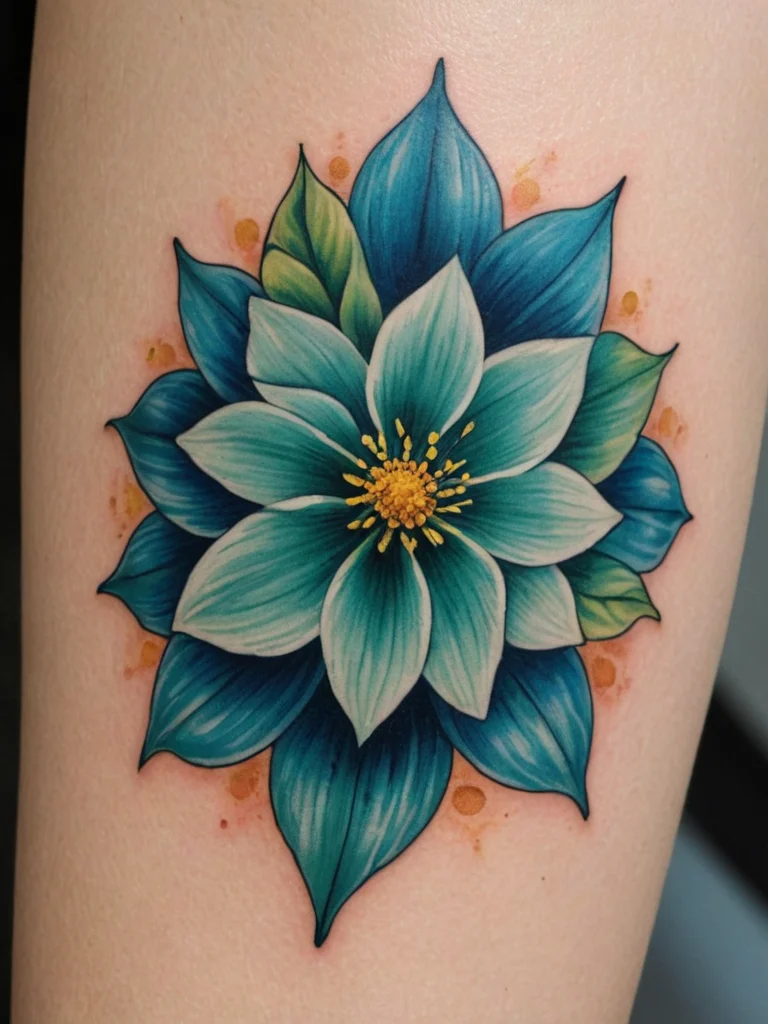The vibrant world of tattoos offers a dazzling spectrum of colors, each contributing to the unique artistry and personal meaning etched onto the skin. From deep blues and passionate reds to sunny yellows and earthy greens, color tattoos are a testament to creativity and self-expression. However, when the time comes for removal, this very vibrancy can present a unique set of challenges. Many individuals considering tattoo removal find themselves wondering: are colored tattoos harder to remove than black ink? The answer, as with many things in the complex realm of body art, is nuanced. Understanding how different ink colors react to removal techniques, particularly laser therapy, is crucial for setting realistic expectations and achieving the best possible outcome. This article delves into the science behind tattoo removal, explores the comparative difficulty of erasing various colors, and offers expert advice on how to navigate the process successfully.
The science of ink: how tattoo colors interact with laser removal
Laser tattoo removal is the gold standard for effectively breaking down tattoo pigment into smaller particles that the body can then flush away. The process relies on a fundamental principle: light absorption. Different wavelengths of laser light are absorbed by different colors of ink. When the laser energy hits the ink particles, it causes them to heat up rapidly, creating a shockwave that shatters the pigment into microscopic fragments. These fragments are then processed and eliminated by the body’s lymphatic system.
The effectiveness of this process is directly tied to the ink’s ability to absorb the specific wavelength of laser being used. Think of it like trying to shatter different colored glass with light. Some colors will absorb the light more readily, becoming hotter and breaking apart more easily, while others might reflect or transmit the light, rendering the laser less effective. Black ink is the easiest to remove because it absorbs all wavelengths of light, making it highly susceptible to the laser’s energy, regardless of the specific laser type used. Conversely, colored inks are often more challenging because they absorb only certain wavelengths and reflect others. This means that removing a colored tattoo often requires a series of treatments with different lasers, each targeting a specific color within the design.
The type of laser and its specific wavelength are critical components in this process. For instance, a common laser used for tattoo removal is the Q-switched Nd:YAG laser, which typically operates at 1064 nm and 532 nm. The 1064 nm wavelength is excellent for dark inks like black and dark blue, as it is well-absorbed. The 532 nm wavelength, however, is better suited for warmer colors such as red, orange, and yellow, as it is absorbed more effectively by these pigments. Other lasers, like the Alexandrite (755 nm) and the Diode (808 nm), are also employed, each with its own absorption characteristics for different ink colors. Tattoo removal specialists use a combination of these lasers, switching between them depending on the colors present in the tattoo, to break down the pigment efficiently.
Furthermore, the composition of the ink itself plays a significant role. Tattoo inks are complex mixtures, and their formulations can vary widely between manufacturers and even between different colors from the same brand. Some inks contain metallic compounds, which can influence how they absorb and react to laser energy. For example, white inks, often used for highlights or special effects, can be particularly tricky. They might contain titanium dioxide or zinc oxide, which can reflect laser light, or they may fade to an undesirable color, such as gray or blue, when treated, requiring a change in laser wavelength or a different approach altogether.
The depth at which the ink is deposited in the dermis also impacts removal. While not directly related to color, inconsistent ink depth can mean that some parts of the tattoo absorb laser energy more effectively than others. Tattoo artists who are more experienced tend to deposit ink at a more uniform depth, which can, in turn, lead to more consistent removal results. Amateur tattoos, or those done by less experienced individuals, might have ink deposited at varying depths, making the removal process more unpredictable.

Comparing the erasure: which tattoo colors are most stubborn?
When discussing tattoo removal, it’s generally understood that black ink is the most straightforward to eliminate. This is due to its high absorption rate across a broad spectrum of laser wavelengths. However, when we venture into the vibrant world of colored inks, a hierarchy of difficulty emerges. Certain colors consistently prove more resistant to laser removal than others, demanding more treatment sessions and a more strategic approach.
Among the most challenging colors to remove are typically greens, blues, and purples. These colors absorb shorter wavelengths of light, and the lasers required to target them, such as the 694 nm Alexandrite laser for greens and blues, or specific combinations for purples, can be less readily available or may require careful calibration. Historically, green and blue inks were often formulated using metallic oxides, like chromium oxide for greens and cobalt or aluminum oxides for blues, which can be particularly stubborn. The light absorption properties of these pigments mean they don’t break down as readily under standard laser treatments.
Yellows, oranges, and reds also present their own set of challenges. While reds can often be treated effectively with the 532 nm wavelength (a frequency often used in conjunction with the 1064 nm for black ink), they can sometimes be unforgiving. Yellows and oranges are notoriously difficult because they tend to absorb the light wavelengths that are least absorbed by common tattoo inks, often reflecting these wavelengths rather than breaking down. This means the laser has less energy to work with, and achieving complete clearance can take a considerable number of sessions.
White ink and neon inks are often considered the most difficult to remove, or at least the most unpredictable. White ink, as mentioned earlier, may contain pigments that reflect laser light or can paradoxically turn gray or black when treated, requiring a different laser frequency or sometimes proving impossible to remove completely without causing scarring. Neon inks, due to their bright and often artificial pigments, can also react unpredictably. Their complex chemical composition might involve fluorescent compounds that don’t respond well to standard laser wavelengths, leading to fading rather than complete elimination, or sometimes discoloration.
It’s important to remember that the age of the tattoo, the quality and type of ink used, and the skill of the tattoo artist who applied it all play a role. Older tattoos, especially those done with traditional inks that may have faded or shifted in hue over time, can sometimes be easier to remove than freshly inked, vibrant pieces. However, the underlying pigment chemistry remains the primary determinant of removal difficulty. Therefore, while black ink offers a relatively predictable removal pathway, the diverse palette of colored inks presents a more complex puzzle, often requiring patience, specialized equipment, and expertly tailored treatment plans.

Factors influencing colored tattoo removal success
The journey to tattoo removal is influenced by a confluence of factors, and when color is involved, these variables become even more critical. Simply knowing that you have a colored tattoo isn’t enough; understanding the specific characteristics of your ink and skin is paramount for a successful removal process. Tattoo artists and removal specialists consider several key elements when developing a personalized treatment plan.
One of the most significant factors is the **type and quality of the ink used**. As discussed, different ink manufacturers employ varied pigment compositions. Professional tattoo inks are generally formulated for stability and vibrancy, but the specific chemical compounds in greens, blues, reds, yellows, and whites can greatly affect how they respond to laser treatment. Older tattoos might have used inks with metallic components or less refined pigments, which can react differently to modern laser technology compared to newer, advanced ink formulations. If you know the brand or type of ink used in your tattoo, it can be helpful information for your removal specialist.
The **number of ink colors present** in a tattoo directly impacts the complexity of the removal process. A tattoo with a limited color palette, say just red and black, will be less challenging than a full-color piece featuring a wide array of hues. Each color may require a different laser wavelength and potentially multiple passes with varying settings to break down effectively. Specialists often need to cycle through different lasers during a single session or across multiple sessions to address all the pigments present, making the overall treatment duration longer and more involved.
Your **skin type and tone** are also crucial considerations. The Fitzpatrick scale, which categorizes skin types based on their reaction to sun exposure, is a vital tool in tattoo removal. Individuals with darker skin tones (Fitzpatrick types IV-VI) have more melanin in their skin. Melanin can also absorb laser energy, which increases the risk of side effects such as hypopigmentation (lightening of the skin) or hyperpigmentation (darkening of the skin), and potentially burns or scarring. For darker skin tones, specialists often use lasers with longer wavelengths, like the 1064 nm Nd:YAG laser, which is less likely to be absorbed by melanin, making the process safer but potentially slower for certain ink colors.
The **age and depth of the tattoo** significantly affect removal outcomes. Older tattoos, particularly those that have faded over time, may have ink particles that have been partially broken down by the body’s natural processes or UV exposure. This can sometimes make them easier to remove. However, the depth at which the ink was originally applied by the tattoo artist is also critical. Deeper ink deposits require more laser energy and more sessions to reach and break down. Conversely, shallowly applied ink, while perhaps fading faster, might also be more prone to epidermal damage during laser treatment.
The **tattoo’s location on the body** can subtly influence the speed of removal. Areas with better circulation, such as the torso or limbs, tend to have a more efficient lymphatic system, which aids in flushing away the fragmented ink particles. Areas with poorer circulation, like extremities, might see slightly slower results. Finally, **your body’s natural healing and immune response** are key. A healthy lifestyle, adequate hydration, and a robust immune system can help the body process and eliminate the shattered ink particles more effectively, contributing to faster and more complete removal.

Maximizing removal results: tips for colored tattoos
Embarking on the journey of colored tattoo removal requires a commitment to the process and a proactive approach to maximize your chances of success. While the inherent nature of colored inks can present challenges, several strategies can help ensure the most effective and efficient removal possible. Collaborating closely with your removal specialist and maintaining good self-care are the cornerstones of achieving clear, unblemished skin.
First and foremost, **choosing the right specialist and facility** is non-negotiable. Look for clinics that employ experienced, certified laser technicians who have a deep understanding of tattoo removal technology and various skin types. Importantly, they should have access to a range of lasers with different wavelengths, as this is essential for tackling the diverse spectrum of colors found in your tattoo. Don’t hesitate to ask about their experience with colored tattoos specifically. A thorough consultation where they assess your tattoo, discuss your skin type, and outline a realistic treatment plan is a vital first step. They should be able to explain which lasers they will use and why.
**Patience and consistency** are paramount. Colored tattoos often require more treatment sessions than black ink tattoos, and the intervals between sessions are typically longer (often 6-8 weeks or more) to allow the skin to heal and the body to process the ink. Resist the urge to rush the process. Skipping sessions or trying to shorten the intervals can compromise results and increase the risk of adverse effects. Adhering strictly to the schedule recommended by your specialist will yield the best long-term outcome.
**Follow post-treatment care instructions diligently**. After each laser session, the treated area will be sensitive. Your specialist will provide specific guidelines, which typically include keeping the area clean and dry, avoiding sun exposure to prevent hyperpigmentation, and applying soothing balms or bandages as directed. Proper aftercare helps the skin heal optimally and reduces the risk of infection or scarring, which can indirectly affect the final appearance of the skin post-removal.
**Maintain a healthy lifestyle**. While not a direct treatment for the ink itself, a healthy body is better equipped to handle the removal process. Staying well-hydrated helps your lymphatic system function efficiently, which is crucial for removing the shattered ink particles. A balanced diet supports overall skin health and immune function. Avoiding smoking is also beneficial, as smoking can impair circulation and slow down the healing process.
Be prepared for **realistic expectations regarding color outcomes**. While significant fading and complete removal are often achievable, certain stubborn colors, particularly lighter shades of green, yellow, and some blues, might not disappear entirely. They may fade substantially, leaving only a faint trace, or in rare cases, might leave a slight residual discoloration. Understanding this possibility from the outset, as explained by your specialist, can help manage expectations and prevent disappointment. Sometimes, a touch-up session with a different laser technology or a minimal cover-up tattoo might be considered as a final step if a faint residual mark remains.
When considering tattoo removal, especially for vibrant, multi-colored designs, it’s essential to approach the process with knowledge and realistic expectations. The science behind laser tattoo removal dictates that different ink colors respond differently to specific laser wavelengths. Black ink remains the most readily treatable due to its broad light absorption. However, colored inks present a more complex challenge, with greens, blues, purples, yellows, and oranges often requiring multiple sessions with specialized lasers. Factors such as ink composition, skin tone, tattoo age and depth, and the skill of the removal technician all play critical roles in determining the success and timeline of the removal process. By choosing a qualified specialist, being patient, adhering to aftercare instructions, and maintaining a healthy lifestyle, you can significantly enhance the effectiveness of colored tattoo removal and work towards achieving the clearest possible skin.

In conclusion, while black ink tattoos are generally considered easier to remove, colored tattoos are certainly not impossible to erase. The advancement in laser technology has made it possible to target a wide range of pigments effectively. However, the process is often more time-consuming and may require a more sophisticated approach. Understanding the interplay between ink color, laser wavelength, and skin type is key to a successful removal. Remember, the goal is not just to fade the tattoo but to do so safely and effectively, preserving the integrity of your skin. Consulting with reputable tattoo removal experts who utilize state-of-the-art equipment and possess extensive experience with colored tattoos is the most critical step you can take. They will be able to assess your unique situation, explain the intricacies of removing your specific tattoo’s color palette, and guide you through each stage of the treatment with expertise and care, ultimately helping you achieve your desired outcome.
